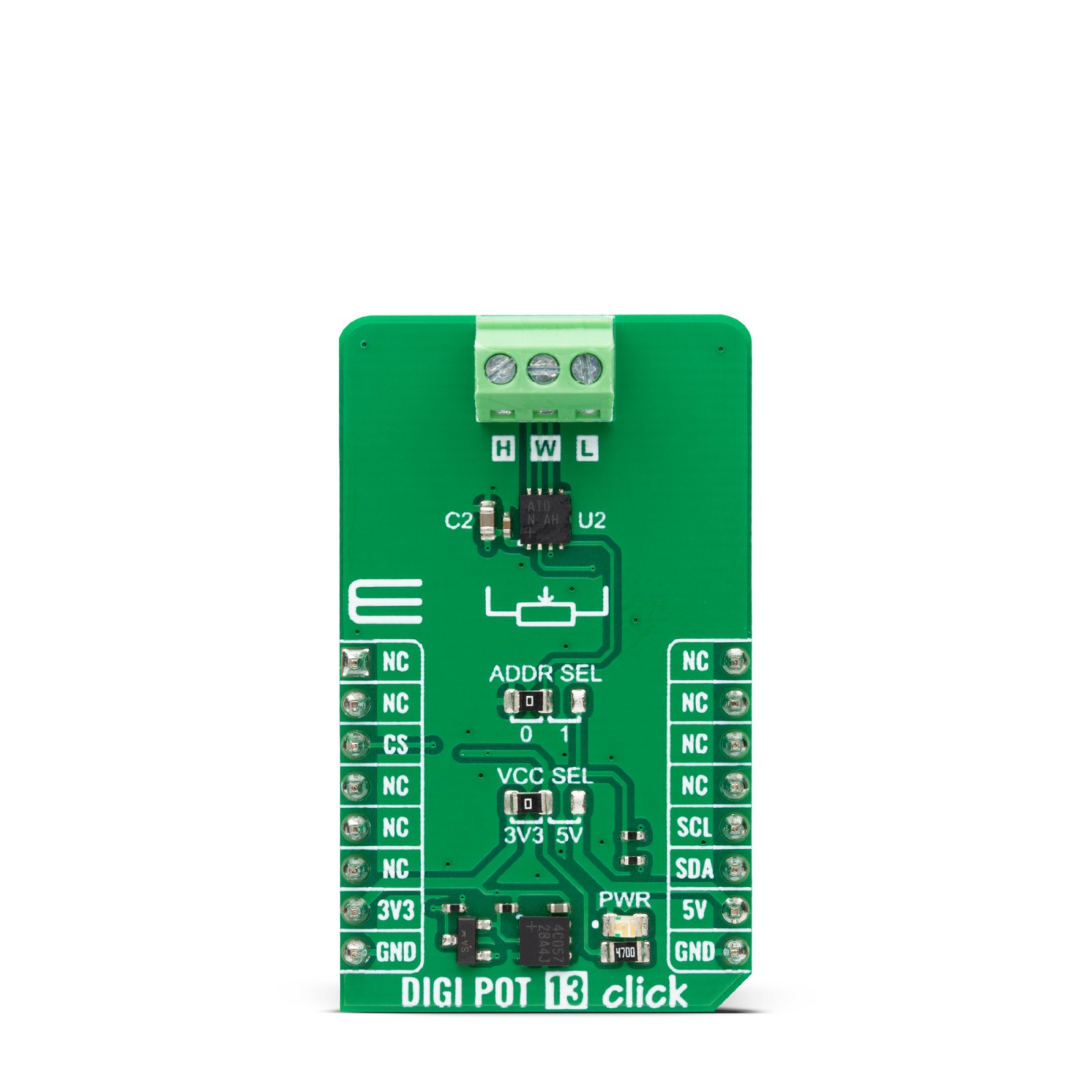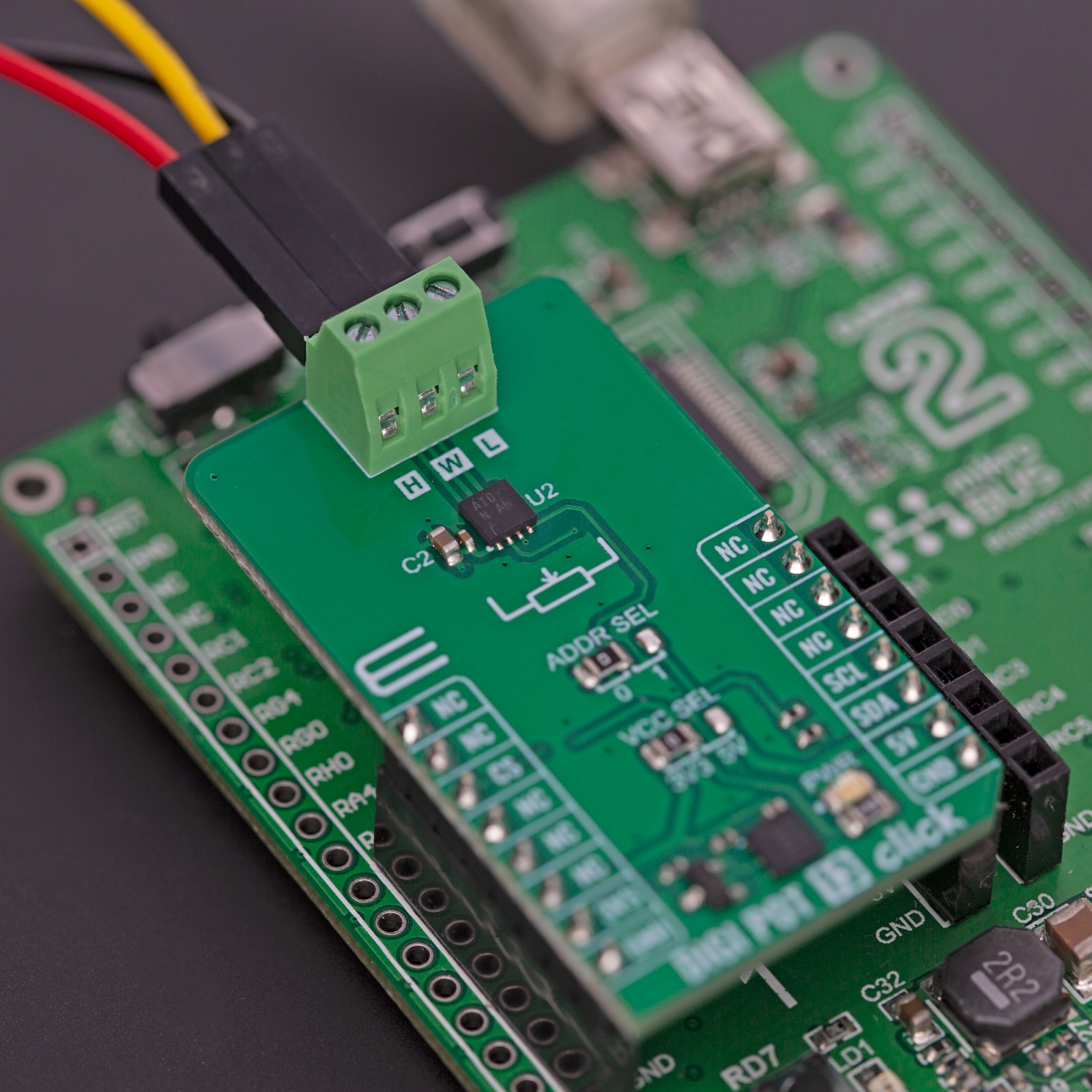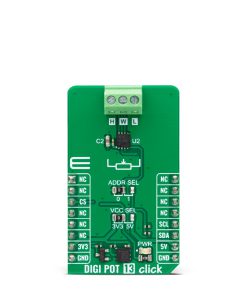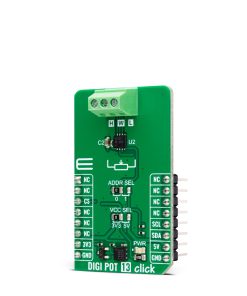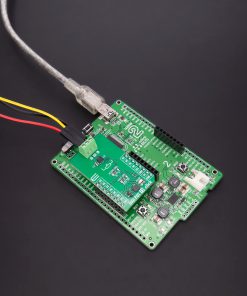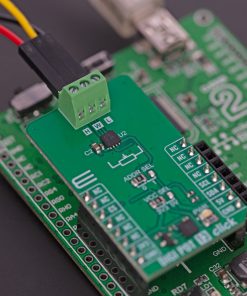DIGI POT 13 Click is a compact add-on board that contains a digitally controlled potentiometer. This board features the MAX5419, a 256-tap non-volatile digital potentiometer from Analog Devices. On this Click board™, one digitally I2C-controlled potentiometer is realized with typical end-to-end resistance values of 200kΩ. It can operate from both 3.3V and 5V power supplies and provides a low 35ppm/ºC end-to-end nominal resistance temperature coefficient and only 5ppm/ºC ratiometric. This Click board™ makes the perfect solution for the development of mechanical potentiometer replacement for the portable consumer market, volume control, LCD contrast control, and battery-backup industrial applications.
DIGI POT 13 Click is fully compatible with the mikroBUS™ socket and can be used on any host system supporting the mikroBUS™ standard. It comes with the mikroSDK open-source libraries, offering unparalleled flexibility for evaluation and customization. What sets this Click board™ apart is the groundbreaking ClickID feature, enabling your host system to seamlessly and automatically detect and identify this add-on board.
 GSM/GNSS Click
1 × R1,700.00
GSM/GNSS Click
1 × R1,700.00  RS485 Click 5V
2 × R235.00
RS485 Click 5V
2 × R235.00  ADC Click
1 × R540.00
ADC Click
1 × R540.00  GSM Click
1 × R1,050.00
GSM Click
1 × R1,050.00  DIGI POT Click
1 × R370.00
DIGI POT Click
1 × R370.00 
